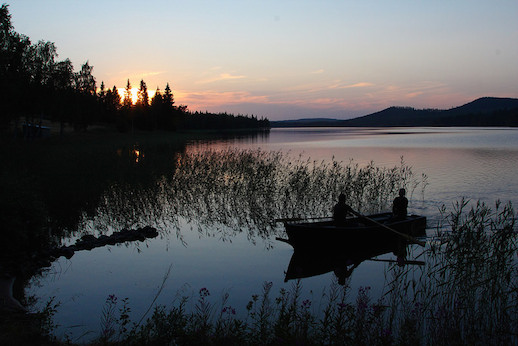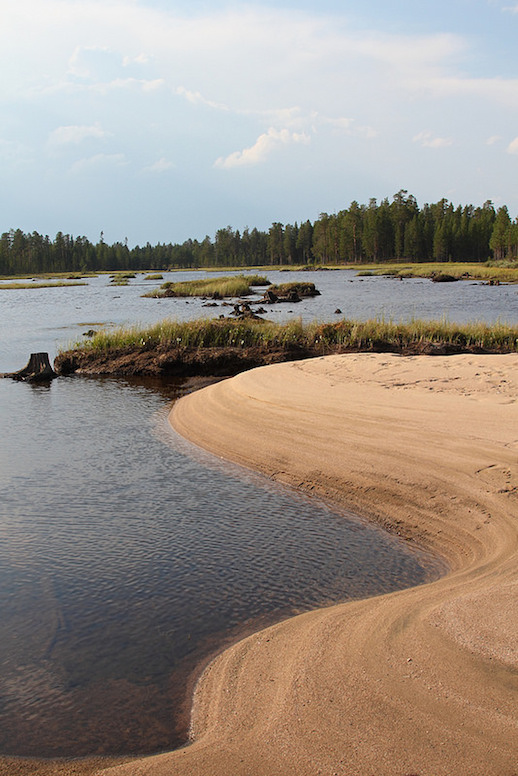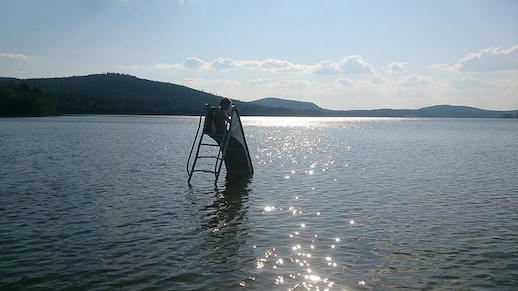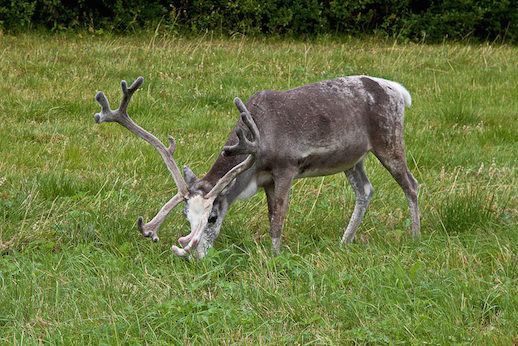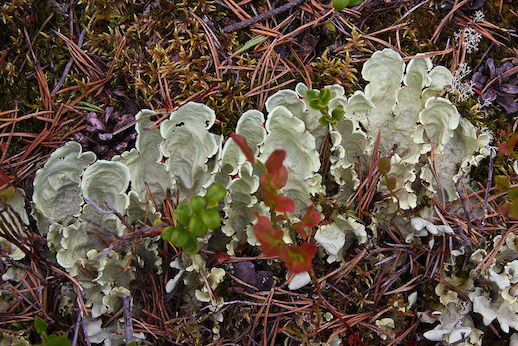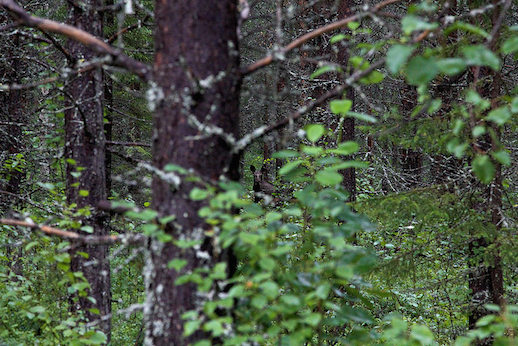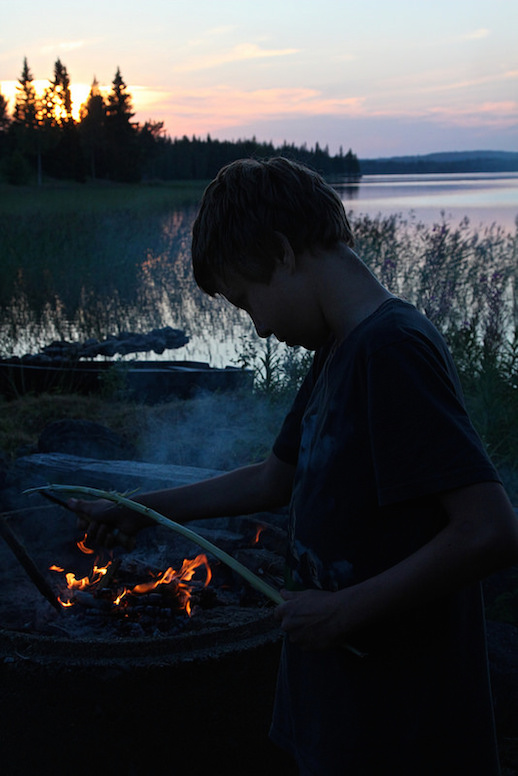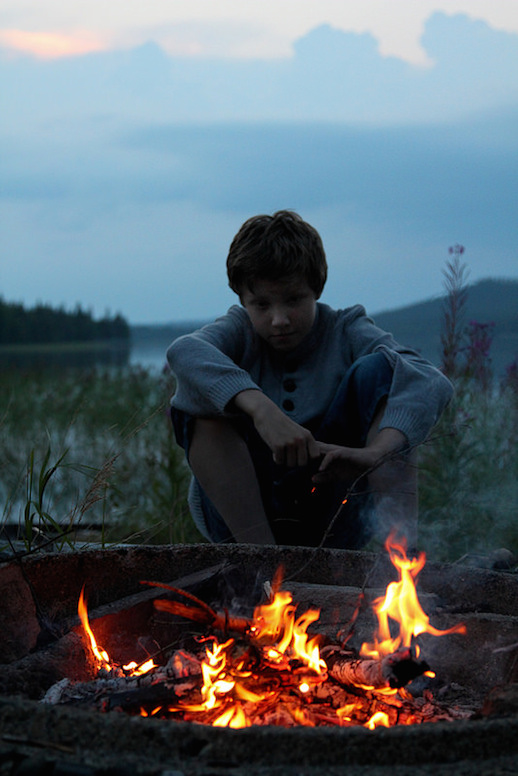Words and pictures: Nick Small.
Forced by penury and other happen-stance to miss out on our annual visit to the Boreal forests of Lapland last year, we were particularly appreciative when we arrived amidst the swamps, meres and forest that surround Skelleftea airport this year. Two years is a long time to be pining for this landscape of inhospitable beauty.
Even better was the journey. Getting to Swedish Lapland used to involve a ferry from Newcastle to Bergen; a stunning, but back-breaking, 1000 mile car journey up through Norway and the kind of financial commitment that would secure a week in a 5 star all inclusive in the Seychelles. I used to dream that, one day, a budget airline would take the unlikely step of opening up a cheap direct route from the UK to Skelleftea. This year, Ryanair did just that. So, for less than it would have cost us to catch a train to London, we endured 165 minutes of hideous yellow plastic as we flew from Stansted to Skelleftea and paradise.
Contrary to what people may imagine, this part of Sweden (near Arvidsjaur) is generally warm and dry in the summer. This year, thanks to the vagaries of the jetstream’s wanderlust, it was tropical. The thermometer on the window of our remote bolt hole seldom dipped below 30 degrees during the long days of our first week, which was great for wild swimming in the lakes and rivers, but not so good for the fishing. And with tinder dry birch and pine all around, the potential (realised with devastating consequences further south) for forest fires was very real.
“The lake has been stocked with 2000 rainbow trout” I was enthusiastically told on our arrival at Jarvtrask. Unfortunately, the high water temperature had sent them retreating to deep water, leaving them indolent and without appetite, so we had to make do with pike and perch fillets, gently fried in butter and black pepper for our lakeside barbecues.
When fishing for pike and fending off perch (the lad remarked that perch are the aggressive little pub brawler of fish) had lost its lustre, I spent my time meandering the endless forest tracks with my camera, looking for wildlife and trying to capture the essence of the wilderness.
The wildlife was very much in evidence this year. Arriving at our house we were greeted by the sight of a gable end riddled with worryingly large holes. In a timber house, this isn’t good at all. According to our forest dwelling, off-grid, woodsman neighbour (who knows these things), the culprit was a Three Toed Woodpecker. It would appear that, when their little patch of forest is harvested for timber, these feisty little buggers exact revenge upon humanity by looking for nesting space in the walls of wooden houses instead: “Take my home would you? Well have some of this”. With the holes patched up, it’s to be hoped that these attractive little birds find somewhere else to wreak their havoc.
Each morning, coffee on the porch was accompanied by the strange calls of the Black Throated Divers on the lake, and the sight of reindeer casually enjoying breakfast. The freshly mown meadow reveals juicy new green grass growth, which must be something of a delicacy after a winter of scraping around under the snow for meagre rations of lichen.
Lichen is not something that you might immediately think of as a thing of beauty, but here it decorates the abundant glacial moraine with intricate and surprisingly colourful psychedelic patterns and textures. Even the limbs of birch and spruce drip with cascading Usnea (beard lichen).
During one of my forays into the forest, I happened upon a young elk. It was only a couple of years old, at a guess, but it was still a sizeable beast. As it stopped to engage me in a fifteen minute bout of mutual ogling, I couldn’t help but marvel at how its evolved colouring rendered it nigh on invisible from only 20 paces away.
As we sat by the lake one evening, gazing into the fire and sipping cheap plonk, my friend Mark observed that one thing that he had in common with all of his closest friends was a love of birds. We came to the conclusion that we both employed a love for birds, wildlife and nature in general as a fairly reliable filter when sorting out meaningful friendships. To us, it was indicative of an enquiring mind and a desire to explore wild spaces during childhood. As my young lad whittled a willow stick to a point upon which he could impale a sausage (to hold over the fire), I was thankful that he, at 11, is capable of identifying birds, trees, animal tracks and edible berries.
In Sweden they really value the learning that children get in the outdoors, whilst we too often content ourselves with the security of knowing where they are (upstairs on the Xbox) and not wondering whether or not they have fallen out of a tree, into a river, or worse. The Swedes know how precious the knowledge is to make a fire without matches; to unhook a perch and return it to the water; to know which berries are safe to eat and how to safely handle a knife. Swedish kids grow up implicitly understanding that to sit mesmerised by the flickering of a fire is a magical alternative to the rapid fire of pixels on a screen.
On top of all that that, when you meet someone who can pick an Osprey from half a mile, or a willow warbler by its mocking call, you have a life tool to treasure. After all, it’s probably what brings each of us here to Caught by the River.
More of Nick on Caught by the River here
